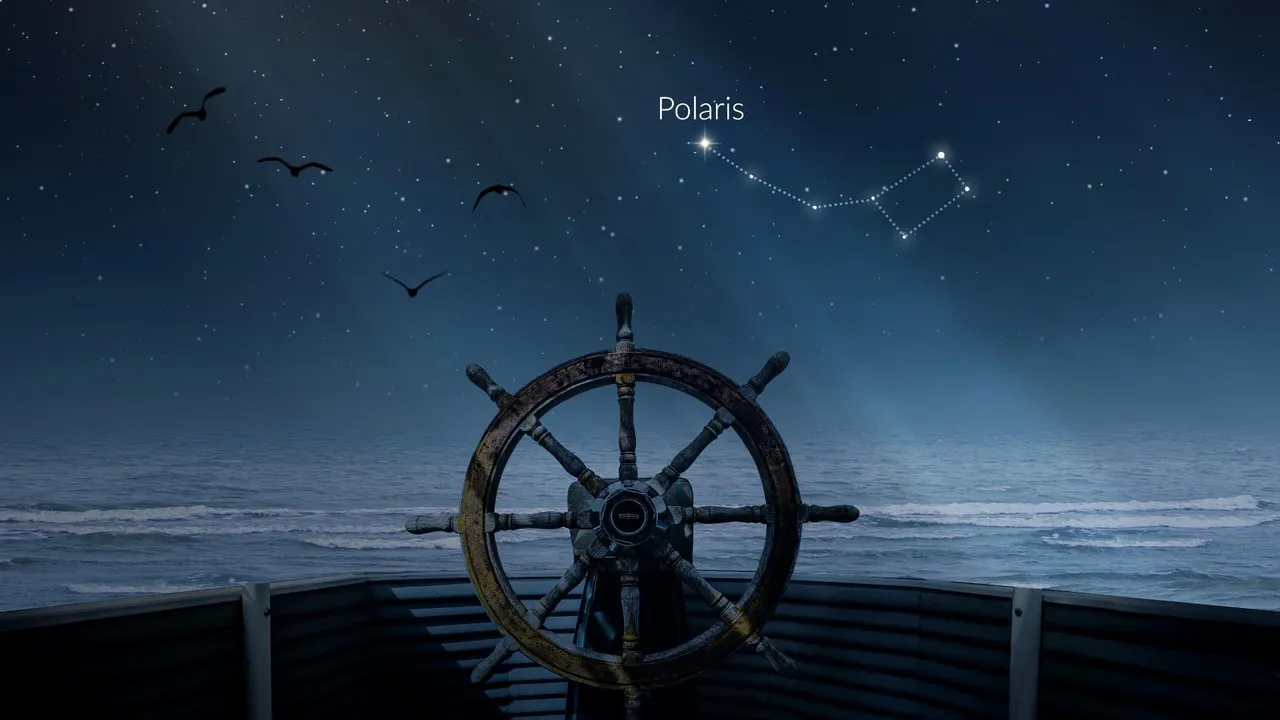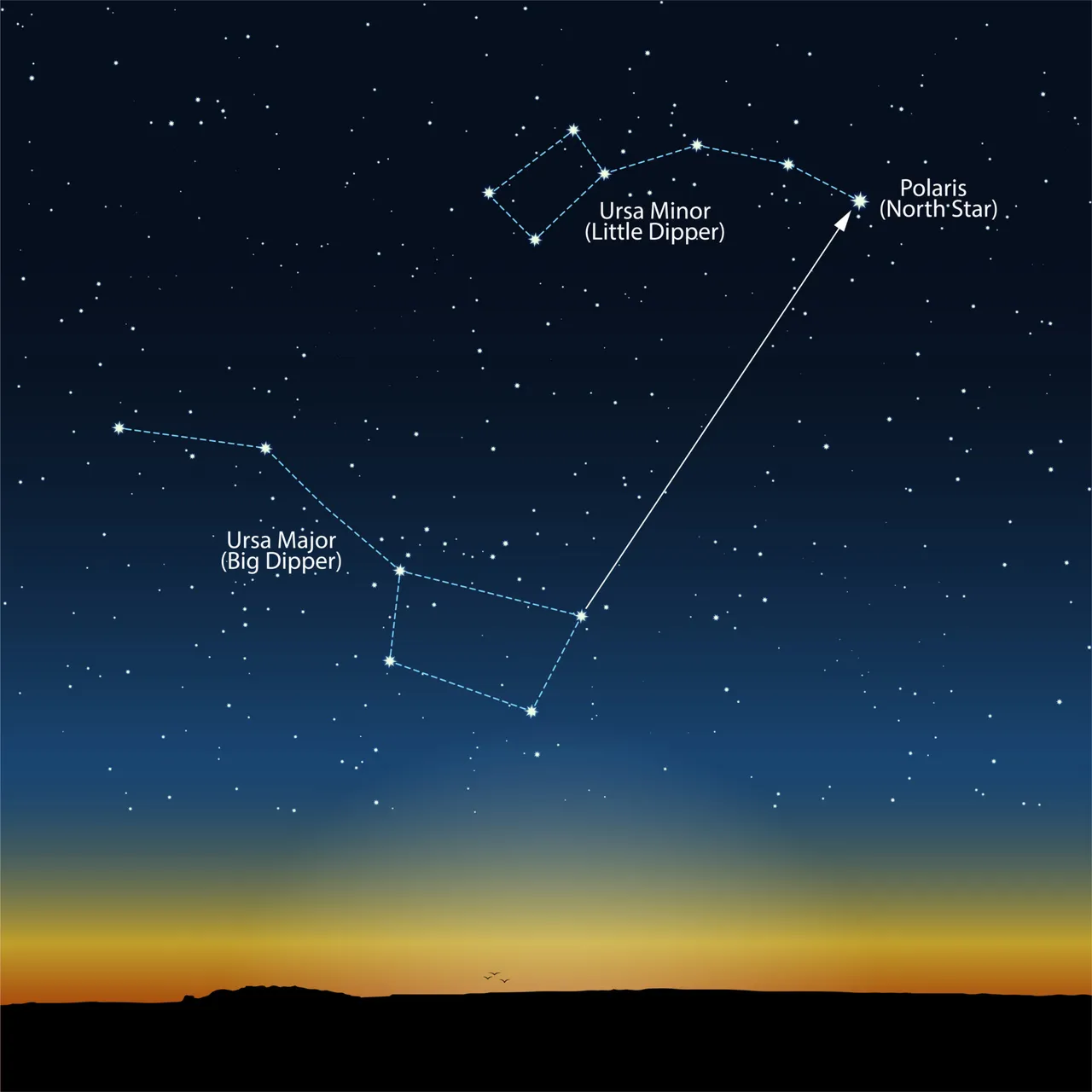SMALL BUCKET (LITTLE BEAR,URSA MINOR)

starwalk.space
is larger in shape resembles a ladle than a bear. Ursa minor It is almost entirely surrounded by the constellation Draco. Only to the north of it is the constellation Giraffe.
Ursa Minor is far from being as bright a constellation as its cousin Ursa Major, but in this constellation is the most important star of today's sky -
POLAR STAR
She always stays almost in the same place, while the rest of the stars revolve around her in the sky. It lies almost on the same straight line with the axis of our planet, the one around which our native Earth turns, and wrapping around which gives us such a phenomenon as the change of day and night.
The North Star is above the North Pole. And if you watch from the Earth, it seems that it is a heart around which other stars turn. It is not quitestationary however, but has an exceedingly slow vibratory motion called nutation,causing the pole star to change in the course of millenniums.
It was not always located closer to the pole than other stars. Due to the wobble of the earth's axis, the pole of the world gradually shifts over the centuries and various stars in turn become polar.
For the same reason, after a few centuries, the North Star will no longer point north.
The north celestial pole changes over the course of 25,800 years and describes a circle near the north ecliptic pole with an angular radius equal to the inclination of the ecliptic (23°27') to the plane of the celestial equator. During this period, the various stars lying on or near this circle become polar in turn. So, for example, 2500 years ago, Beta Ursa Minor was the polar star, and therefore the Arabs gave it the name Kokhab (Star of the North). In our time, the North Pole of the world is approaching the North Star and will be closest to it in 2100. After that, it will begin to move away from it, and the North Star will give way to other stars in turn, for example, around 4000, the polar star will be γ Cephei, about 10,000 - the star Deneb (Α Cygnus), around 14,000 - the star Vega (a Lyra), etc. Only 25,800 years after 2100 will the North Pole of the world again approach the Polar Star, and it will rightfully be be called polar. The ancient Greeks called the North Star Kinosura (Nurse of Zeus).
The North Star is a variable pulsating star, its apparent brightness varies from 1.96 to 2.05 and it occupies the 45th position in the ranking of the brightest stars.
A feature of the North Star is that it is a double star. Both components of the system are visible separately only through a telescope.
The North Star was often used in navigation. Since it accurately indicates where the north is.

science-sparks.com
It is visible all year in the northern hemisphere at the tip of a constellation called Ursa Minor (the Little Bear). To find it, you can use another constellation called Ursa Major (the Great Bear). stars form a shape that is known as Seven of its the Big Dipper or the Plough. The two stars that form the front of this shape point to the Pole Star, which is the next bright star you see.
The distance from the Earth to the North Star is 472 light years. In the constellation Ursa Minor, near the star p (Kokhab), there is a radiant of the Ureid meteor shower.
Most of the stars in the Small Dipper are faint; only two at the bottom of the Bucket are brighter. They are called the "guardians" of the pole, as they walk around the pole like sentries.
Used literature -
Space a visual encyclopedia
art for astrology
Space Encyclopedia
